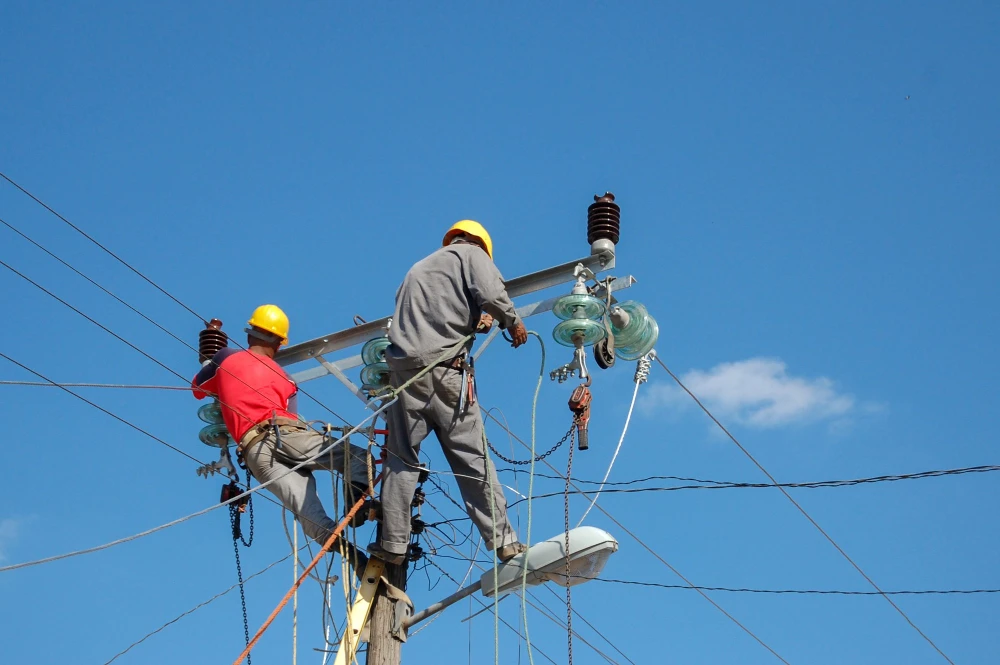Current and voltage asymmetry in the power grid – causes and effects
 Current asymmetry in the power grid
Current asymmetry in the power grid
As a result of the free energy market, energy suppliers must ensure that the electricity for which consumers pay is of the right quality. The correct parameters are defined by the relevant standards and regulations. However, there may be adverse phenomena in the power grid that affect the performance of the power system. One such phenomenon is asymmetry in the power grid. What is it, what causes it and what can its effects be?
What is voltage and current asymmetry?
There are three types of asymmetry that occur in the power grid: voltage asymmetries, current asymmetries, and simultaneous voltage and current asymmetries. One of the conditions for the proper operation of the power system is to ensure the symmetry of voltages in three-phase systems. This means that the sum of the combined values of the phase voltages should be zero and the angles between the individual phases should be equal (the phase voltage vectors should be shifted 120 degrees with respect to each other).
A situation where, in a multi-phase network, either the rms values of the phase voltages or the values of the shift angles between these voltages are different is what we call asymmetry in the power grid. Of course, the values specified in the definition apply to the ideal world. In practice, the standards allow for some deviations. Asymmetrical voltage occurs when the average 10-minute value of the asymmetry factor exceeds 2% for more than 95% of the time during the week.
Sources of asymmetry in the power grid
Sources of disturbances that cause asymmetry in the grid can vary and depend on which power lines we are considering. Asymmetry can result from differences in the internal design of grid components, such as generators, transmission and distribution lines, and transformers. In that case, we are dealing with structural asymmetry. Its source can also be asymmetric currents. For example, with regard to a high-voltage line, asymmetry can arise due to the different self and mutual impedances of each phase due to the distribution of the phase conductors on the support pole. On the other hand, a medium-voltage or low-voltage line may have an asymmetrical voltage due to the use of numerous single-phase loads by electricity consumers or due to various faults on the load side.
Furthermore, the present operation of power grids in the context of the development of renewable energy sources (RES), prosumer energy generation and the possibility of connecting to the low-voltage grids, such as individual photovoltaic installations or heat pumps, can result in a significant increase in voltage and current asymmetry. This is due to the large variation in the energy production process, which is highly dependent on weather conditions, as well as the demand for energy on the consumer side. One way to mitigate this risk is to ensure that RES are connected evenly across phases.

Effects of asymmetry
Asymmetry affects the quality of electricity supplied to consumers. It can cause voltage drops and even power outages and grid failure. Asymmetry also affects the efficiency of the entire power system, the electricity transmission and distribution process, and this can translate into higher energy prices. Furthermore, asymmetry is not harmless to equipment such as motors and transformers, contributing to a significant reduction in their service life through, for example, excessive heating. When it comes to transmission lines, asymmetries reduce their capacity, increase power and energy losses and can also increase the power and electricity measurement error. For electricity consumers, asymmetries involve, for example, the risk of damage to household appliances, such as fridges, washing machines or TVs, due to being supplied with phase voltages that are too high or too low.
Measuring and mitigating the negative effects of asymmetry
In order to prevent the negative effects of asymmetry, relevant standards and regulations are being developed to guarantee the proper quality of electricity in the grid. In creating them, not only the definition of asymmetry is taken into account, but also naturally occurring phenomena, such a certain asymmetry in the impedance of power grid components. For this reason, both national and international standards do not adopt a voltage asymmetry level below 1%, as such a standard would be too stringent.
Moreover, in the case of, for example, the protection of three-phase electric motors, a phase asymmetry sensor is used to continuously measure the network parameters and, if a hazard is identified, to protect the motor by switching off the power supply even before a failure occurs.
Summary
The efficiency of the power system is closely connected to the phenomenon of voltage and current asymmetry and, above all, to its mitigation. The direction of energy development makes this issue extremely important for the entire energy sector. Multifaceted efforts to mitigate the effects of asymmetry, whether in the form of appropriate standards, modernisation of grids and equipment or strategic planning, are important from the point of view of both energy suppliers and consumers.